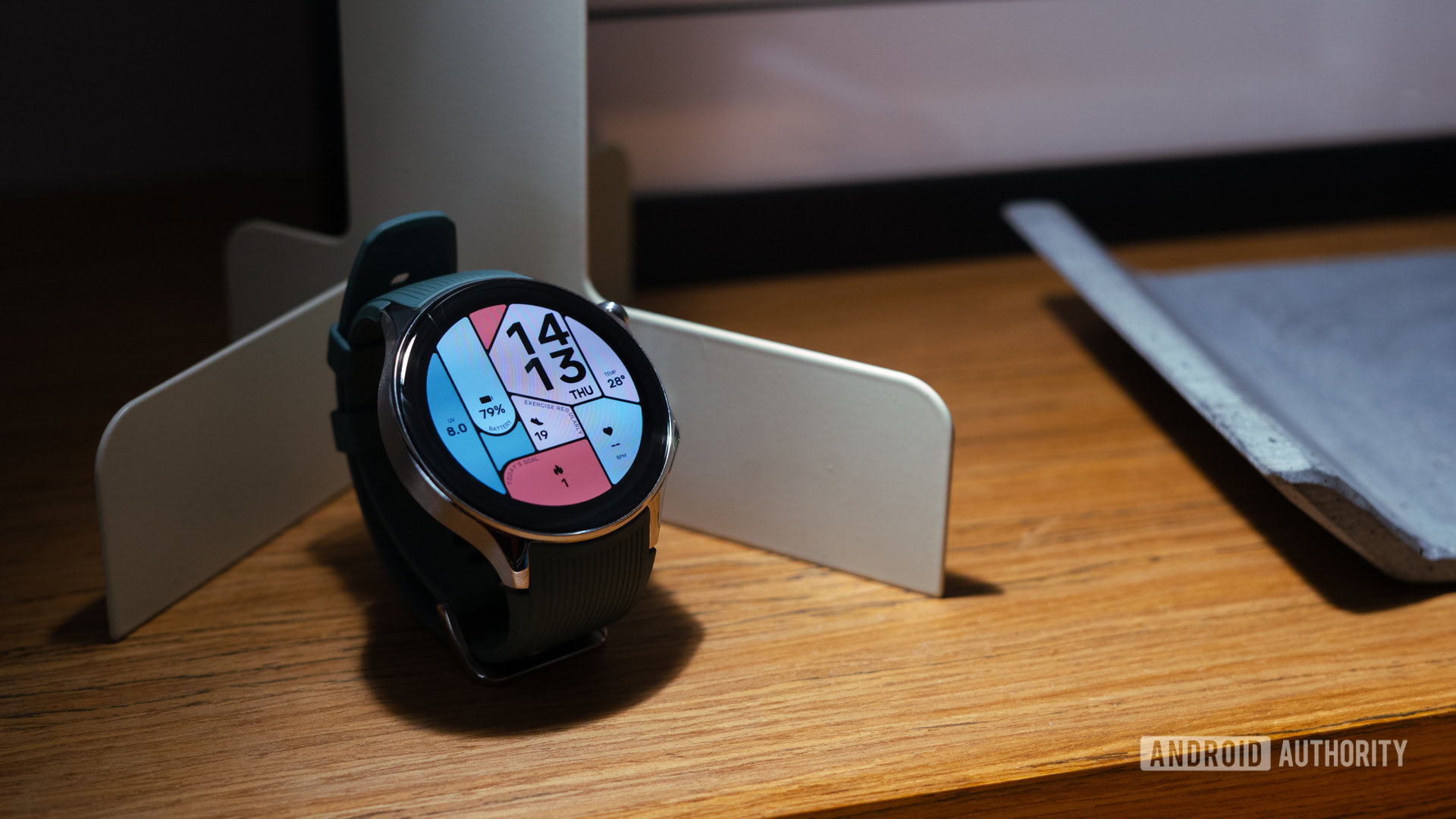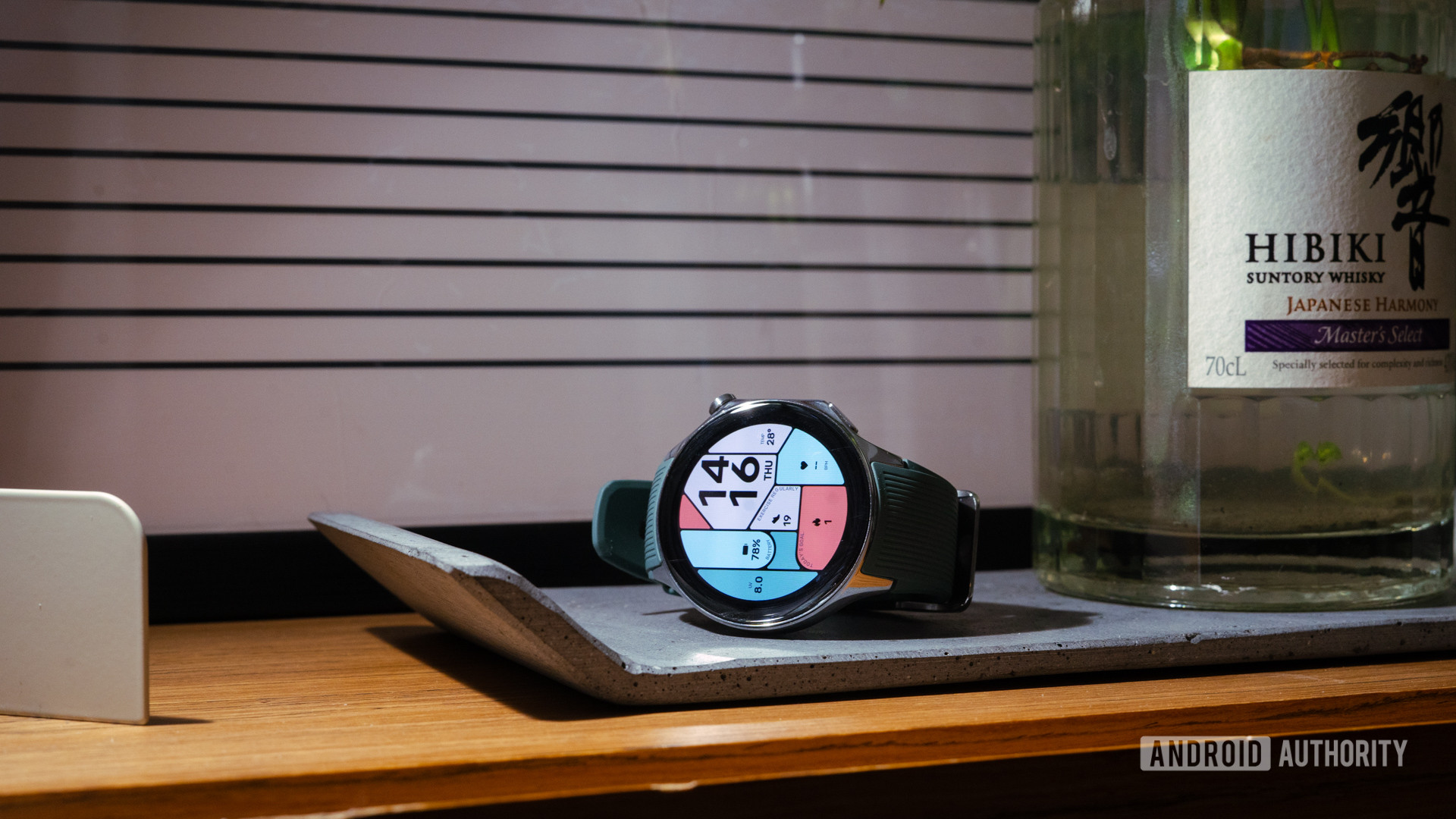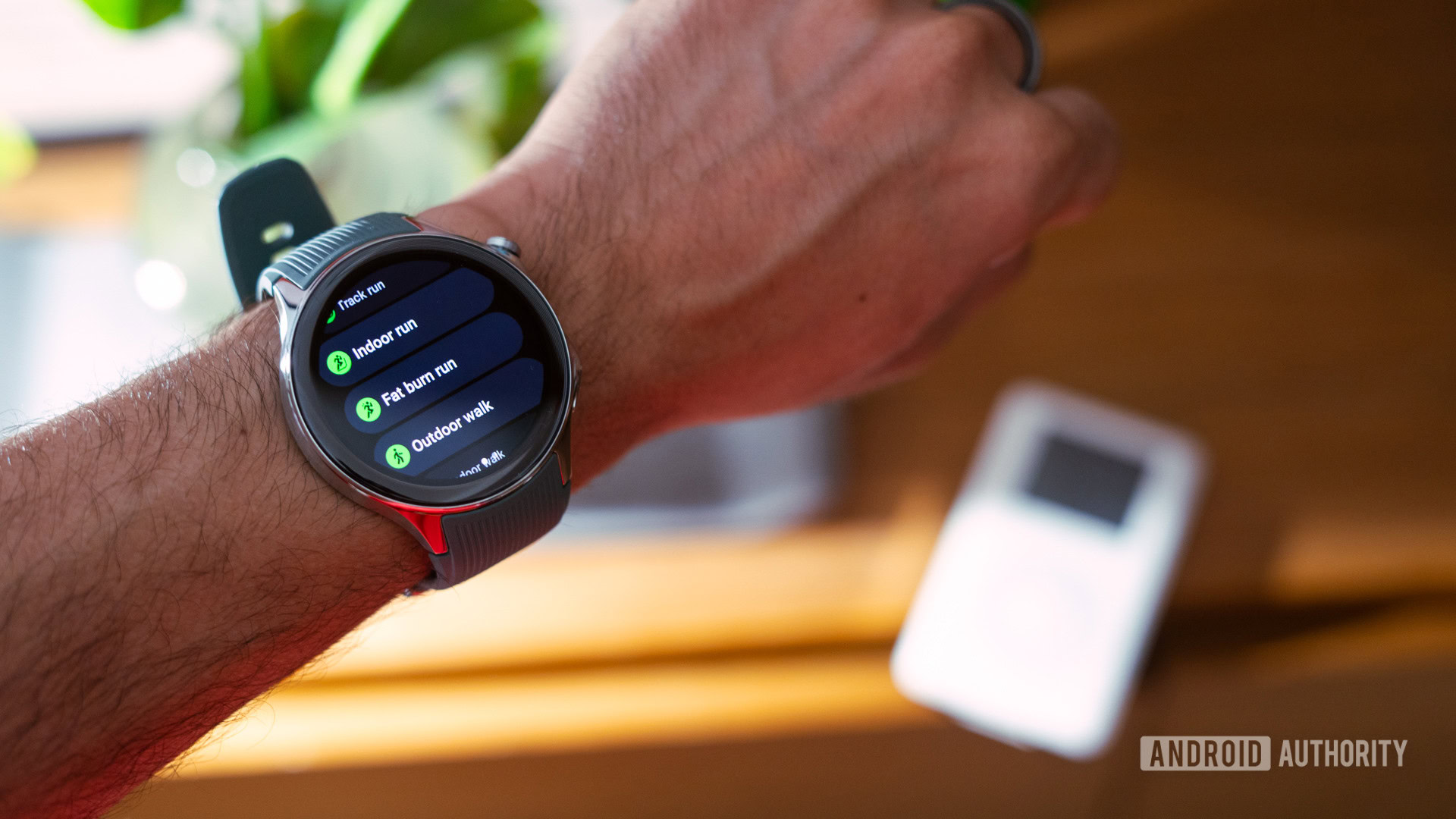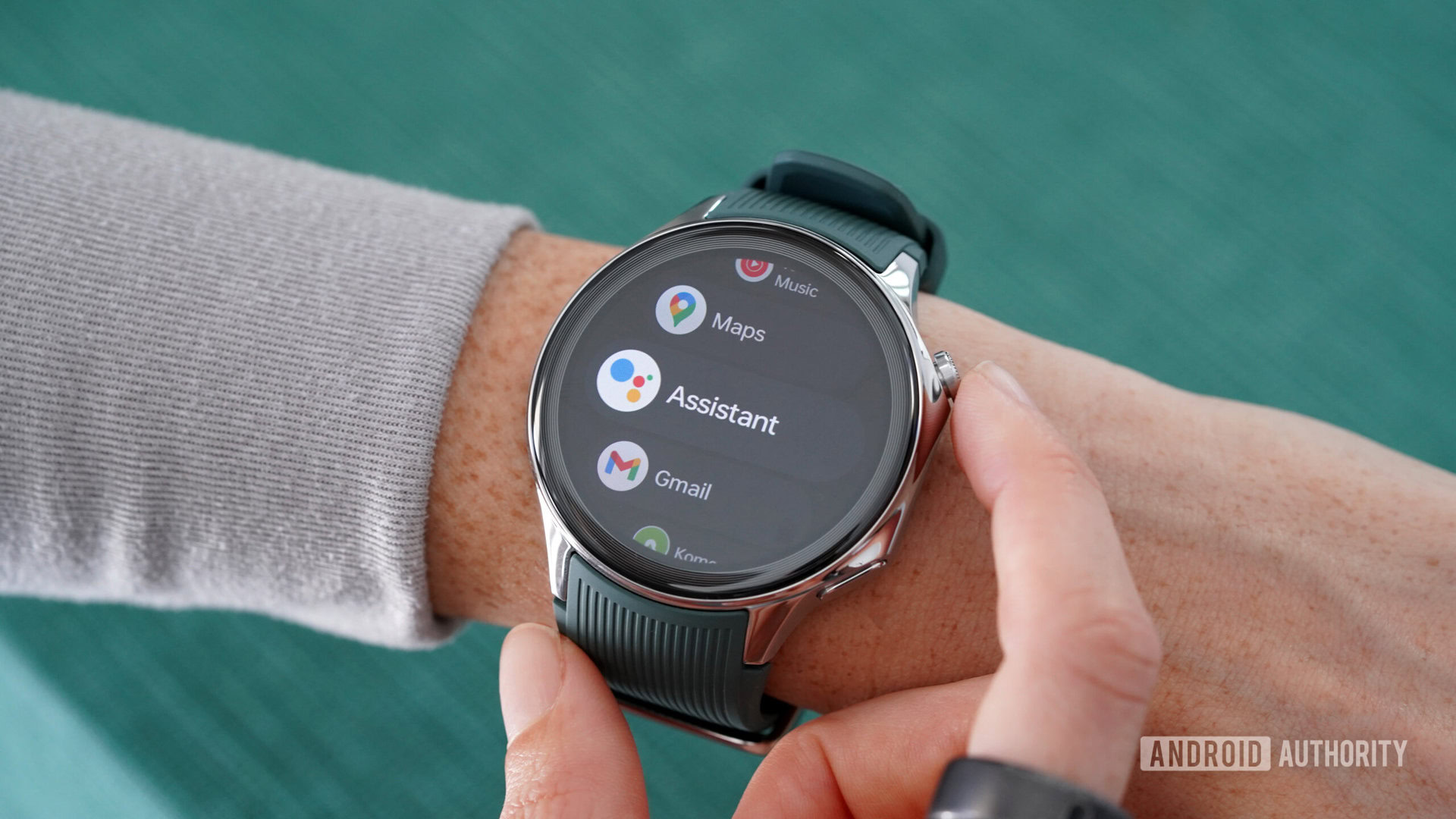Affiliate links on Android Authority may earn us a commission. Learn more.
OnePlus Watch 2: A great smartwatch, held back by Google's shortcomings

Competition breeds innovation, but saying that the Android smartwatch market has stagnated would be an understatement. Between Fossil exiting the game and limited options from the likes of Mobvoi, the Android smartwatch market is, by and large, a two-horse race between Samsung and Google. So I was particularly excited for the arrival of the OnePlus Watch 2 as a potential contender for the best Wear OS watch crown.
Despite its limitations, the watch is setting a new benchmark regarding battery life, innovative dual-OS tech, and, arguably, design. More importantly, the broader availability of this watch is very appealing.
However, despite all its positives, the OnePlus Watch 2 is not perfect. I switched from an Apple Watch Ultra about a month ago and, while my experience has been largely positive, I believe the OnePlus Watch 2 is a phenomenal piece of hardware that is being held back by Google’s noncommittal approach to Wear OS. Here’s why.
OnePlus Watch 2: Large size, larger ambitions

I’m not about to summarise everything I like about this smartwatch; you can refer to my colleague Kaitlyn’s excellent OnePlus Watch 2 review for that. However, it wouldn’t be unfair to say that OnePlus has made a complete turnabout with this new watch. While the company’s first outing nailed the design, it lacked in terms of actual smarts. The Watch 2 manages to excel with its exceptional build quality — despite the non-functional, albeit aesthetic, crown. It also has an enormous battery that genuinely lasts me well over two days of active use, including an hour or two of workout tracking every day and GPS-enabled outdoor runs. Elsewhere, the fitness metrics aren’t perfect but good enough for casual use, and the sleep tracking is on point.
The OnePlus Watch 2 stands out for its incredible dual-OS feature and stellar battery life.
Most importantly, the OnePlus Watch 2 launches with Wear OS 4 out of the box. And that’s a big win for OnePlus at a time when options running Google’s latest wearable operating system are astonishingly thin. It brings compatibility with a wide range of apps and services, better watch faces, integration with Google’s calendar and mail apps, and more. If you prefer voice-based interactions, that’s represented too.
Phenomenal hardware let down by stagnant software

However, the most significant advantage of the OnePlus Watch 2 is also its crutch. I’ll be honest: I’ve never been the biggest Wear OS fan. My last long-term experience with the operating system was on the OPPO Watch back in 2020. A lot has changed since then. What hasn’t, though, is the entirely disjointed experience of using a Wear OS watch.
Health and fitness are essential to me, but years down the line, Wear OS still has no standardized way of handling fitness tracking. On the OnePlus Watch 2, the OHealth app is the primary means of tracking fitness. Unfortunately, as we explored in our review, the app is too simplistic and lacks the granular metrics that I’ve come to expect from my Apple Watch Ultra or Garmin.
Adding insult to injury is the fact that health tracking isn’t perfect either. Step counts tend to be inconsistent and I have no faith in the calorie burn information. Google could solve this by offering a standardized health API that other apps can use to customize the interface experience, but that isn’t the case here. The Apple Watch does it; why can’t Google?
On the point of health tracking, getting data out of the watch isn’t easy. Yes, I’m aware of Health Connect but the entire process is incredibly hit or miss, and rarely does all the data transfer to Google Fit. I also use Strava as my running data aggregator of choice. Since neither Health Connect nor OHealth have hooks into Strava, I depend on Strava’s integration with Google Fit to pull data. The problem here is that, once again, not all metrics are transferred across the board. Compare that with my Apple Watch Ultra, where every time I finish a workout, the data is seamlessly transferred to Strava. I really shouldn’t need three different health apps on my phone to access my workout data.
I shouldn't need three co-dependent apps on my phone just to get better fitness metrics.
In fact, I’d have expected Google to leverage Fitbit’s excellent data algorithms to create a standardized fitness API that any app could tap into and get seamlessly reliable data. Not only would this improve the fitness capabilities of smartwatches across the board, but it would also create a uniform baseline across smartwatch brands. As it stands, if I switch from a Galaxy Watch to a OnePlus Watch or, perhaps, a Pixel Watch, the fitness data algorithms have no correlation at all.
The other big issue I’ve observed is the quality of apps. Coming back to Wear OS after a couple of years, it’s pretty disheartening to see that the quality of apps and services on the Play Store hasn’t improved all that much. For example, my favorite intermittent fasting app, Zero, still isn’t available on Wear OS despite having a fully functioning version for the Apple Watch. Similarly, I’m partial to Shelly’s smart home devices. The company has released an Apple Watch app but has no such alternative for Wear OS. Sure, Wear OS’ limited user base leaves little incentive for brands to invest in apps for the platform. But that chicken and egg problem, too, is wholly of Google’s doing.
A problem wholly of Google’s doing

Be it Google’s perpetual rebranding cycle, the snail-like pace of releasing updates, or software exclusivity with Samsung that limits options — the very thing that makes Android products so exciting — Google has clearly treated Wear OS as a second-class citizen. The fact that basics like public transit navigation are only now coming to Wear OS, and essentials like offline maps remain missing boggles the mind.
Google's second-class citizen treatment of Wear OS with glacial updates, software exclusivity, has created this ecosystem of limited hardware options and lackluster software.
There’s no doubt in my mind that OnePlus has built one of the best examples of Wear OS smartwatches. Yes, it’s large, but I can learn to live with the gargantuan size simply because of the tremendous battery life it offers. But all those hardware efforts are being let down by the lackluster software powering the show. While there are signs that Google is finally starting to turn the ship around with its recent Wear OS announcement, like the hybrid interface that debuted on the OnePlus Watch 2, it’s clear that a lot more needs to change to make Wear OS a formidable Apple Watch alternative.